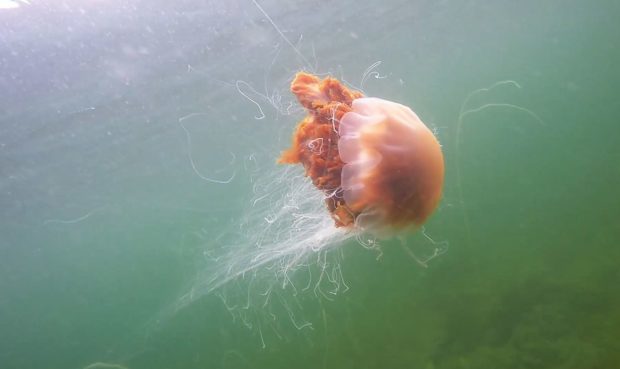Fife beachgoers are being urged to keep their distance from a species of jellyfish which has left five people in Ireland in hospital.
Swarms of the Lion’s Mane species have washed up around the Kingdom in recent weeks.
The animals have the most formidable sting of any jellyfish in British waters and can still leave people in agony long after they have died.
The Fife Coast and Countryside Trust issued a warning, asking members of the public not to touch the beached animals.
The group said: “Large numbers of Lion’s Mane Jellyfish have been washed up on local beaches, this one was on Seafield Beach.
“Please be aware that the tentacles of this particular species keeps its sting for a long time after the jellyfish has died.
“You should never touch them and always keep children and pets away.”
Several sightings have been reported including large blooms at Kirkcaldy and Kinghorn beaches.
While the sting is not fatal, the pain caused by it can radiate to other parts of the body.
Jasmine Headlam, PhD Researcher from the Ryan Institute at NUI Galway, said: “Lion’s mane stings, though not generally considered fatal, can cause a lot of pain.
“Stings from large lion’s mane can be particularly dangerous, as the thousands of thin tentacles can each extend to several meters long.
“Initially, a sting may result in itching or localised pain that may radiate to other areas of the body, potentially progressing to severe pain within 20 minutes or more.
“In some cases, stings can result in Irukandji-like syndrome.
“This syndrome, named after a type of box jellyfish, can involve symptoms including back pain, nausea, abdominal cramps, sweating and hypertension.”
Experts advice washing the affected area with vinegar before applying a heat pack for 40 minutes.
Lion’s Mane jellyfish can be found in cool waters between June and September.
The formidable creatures grow tentacles up to six foot long and can weigh as much as 25kg.











